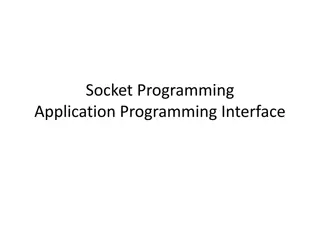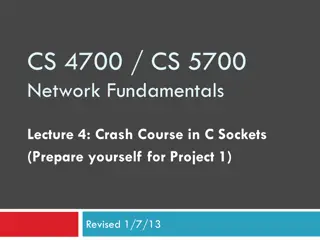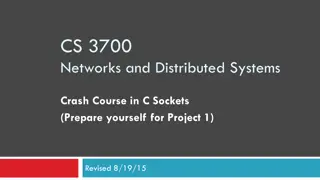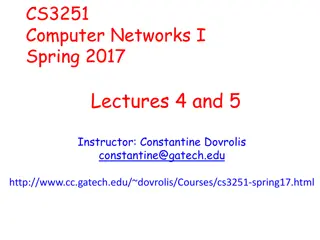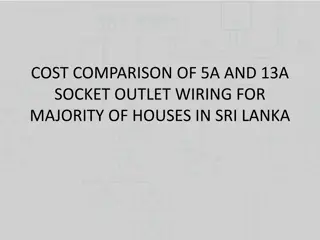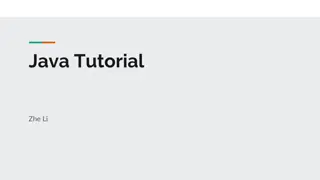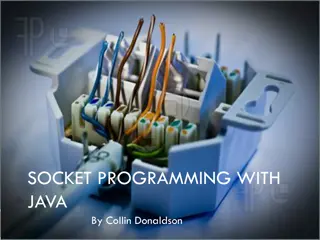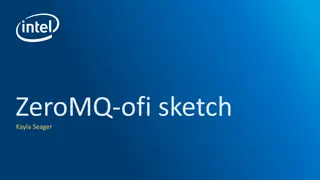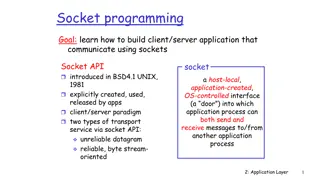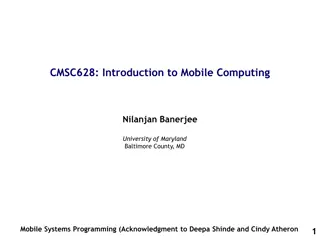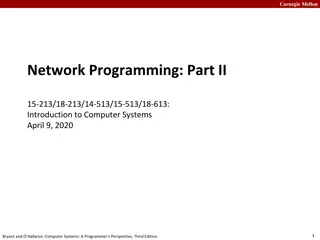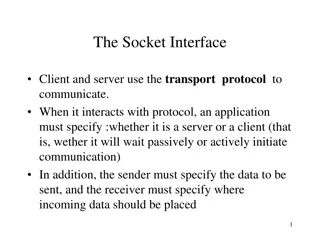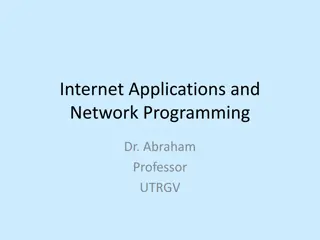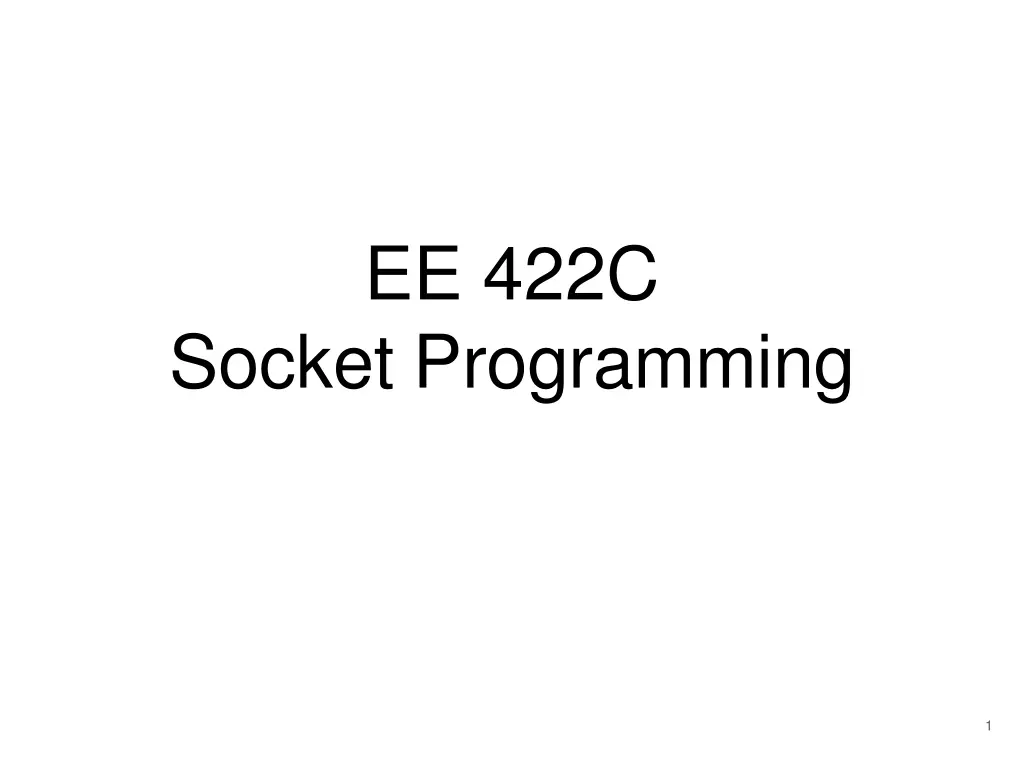
Socket Programming Concepts and Examples
Learn about socket programming concepts, connection establishment, sending and receiving data, and client-server interactions. Explore a comprehensive guide with images and examples to understand the fundamentals of network communication using sockets in Java.
Download Presentation

Please find below an Image/Link to download the presentation.
The content on the website is provided AS IS for your information and personal use only. It may not be sold, licensed, or shared on other websites without obtaining consent from the author. If you encounter any issues during the download, it is possible that the publisher has removed the file from their server.
You are allowed to download the files provided on this website for personal or commercial use, subject to the condition that they are used lawfully. All files are the property of their respective owners.
The content on the website is provided AS IS for your information and personal use only. It may not be sold, licensed, or shared on other websites without obtaining consent from the author.
E N D
Presentation Transcript
EE 422C Socket Programming 1
Socket Programming - Concept 1. Socket ( java.net.Socket class) is an object that represents a network connection between two machines. 2. Client wants to make a Socket connection - who it is (Server s IP address), and - which service (Server s port number). 3. Port number is a 16-bit number that identifies a specific program on the server. The port numbers from 0 to 1023 are reserved for well-known services, pick your port number from 1024 to 65535. 4
Socket Programming - Connect (cont.) ServerSocket serverSock = new ServerSocket(4242); while(true) { Socket clientSocket = serverSock.accept(); Thread t = new Thread(new ClientHandler(clientSocket)); t.start(); System.out.println("got a connection"); } Server Client Socket clientSock = new Socket( 190.165.1.103 ,4242); 6
Socket Programming - iClicker (2) How does a client know the host s IP address when requesting a socket connection? A. By querying the host directly B. By looking up the host s IP address in some database, like a DNS, or some means outside the program. C. Other 11
Socket Programming - Example Example: Chat Server and Chat Client 12
Example - Client public class ChatClient { private BufferedReader reader; private PrintWriter writer; private JTextArea incoming; private JTextField outgoing; ... private void setUpNetworking() throws Exception { Socket sock = new Socket("127.0.0.1", 5000); InputStreamReader streamReader = new InputStreamReader(sock.getInputStream()); reader = new BufferedReader(streamReader); writer = new PrintWriter(sock.getOutputStream()); Thread readerThread = new Thread(new IncomingReader()); readerThread.start(); } } class IncomingReader implements Runnable { public void run() { String message; while ((message = reader.readLine()) != null) { incoming.append(message + "\n"); 13 }}
Example - Server public class ChatServer { private ArrayList<PrintWriter> clientOutputStreams; private void setUpNetworking() throws Exception { clientOutputStreams = new ArrayList<PrintWriter>(); ServerSocket serverSock = new ServerSocket(5000); while (true) { Socket clientSocket = serverSock.accept(); PrintWriter writer = new PrintWriter(clientSocket.getOutputStream()); Thread t = new Thread(new ClientHandler(clientSocket)); t.start(); clientOutputStreams.add(writer); System.out.println("got a connection"); } } 14
Example - Server (Cont.) class ClientHandler implements Runnable { private BufferedReader reader; public ClientHandler(Socket clientSocket) throws IOException { Socket sock = clientSocket; reader = new BufferedReader(new InputStreamReader(sock.getInputStream())); } public void run() { String message; while ((message = reader.readLine()) != null) { notifyClients(message); } } } private void notifyClients(String message) { for (PrintWriter writer : clientOutputStreams) { writer.println(message); writer.flush(); } } 17
Example - Client (Cont.) public class ChatClient { ... private void initView() { ... outgoing = new JTextField(20); JButton sendButton = new JButton("Send"); sendButton.addActionListener(new SendButtonListener()); class SendButtonListener implements ActionListener { public void actionPerformed(ActionEvent ev) { writer.println(outgoing.getText()); writer.flush(); } } 16
Example - Chat Program Demo: Chat Server and Chat Client 17
Example - Chat Program Demo: Chat Program with Observer Design Pattern 20





